Prime Ag Lands Near Lompoc Saved from Housing for Now
More Problems Than Solutions in 148-Acre Bailey Avenue Housing Project
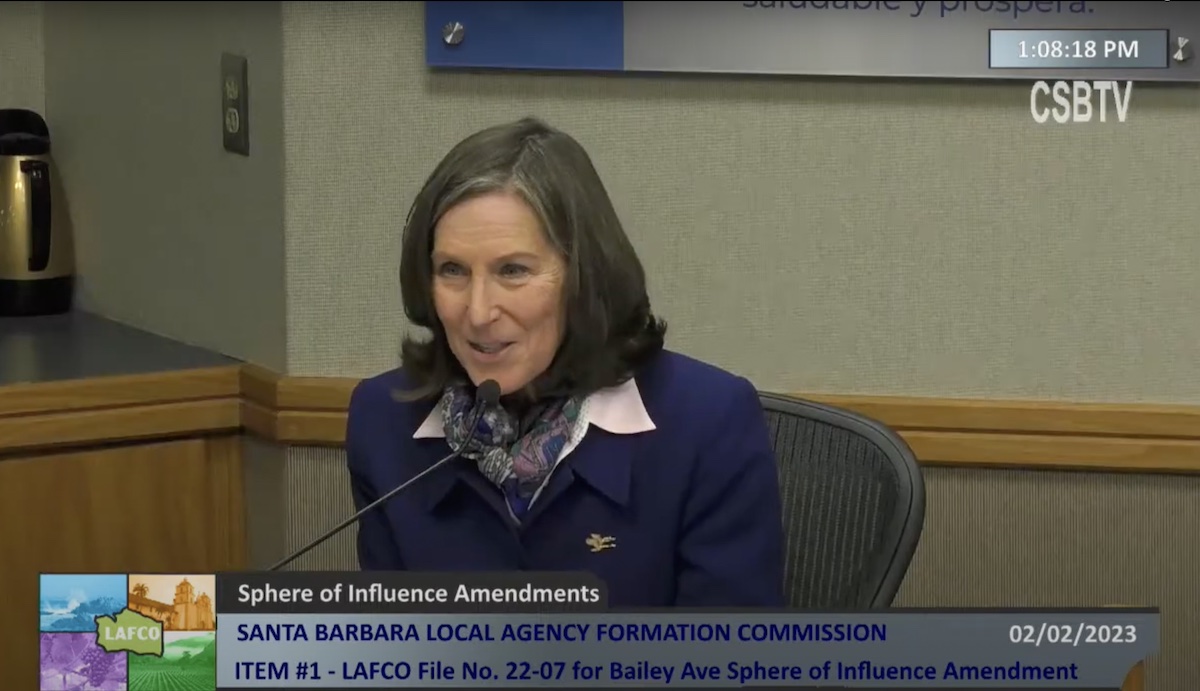
Housing, farming, pesticides, schools, and Lompoc’s “desperate need to move into the 21st century before it’s gone” were weighed against the failings of urban sprawl during a four-hour LAFCO meeting on whether to turn 148 acres of prime agricultural land into something like 2,700 homes and 228,000 square feet of commercial space.
Lompoc has worked on this conversion process since 1998, and the potential housing and commercial-space numbers are speculative and from an uncompleted specific plan. The city’s appearance on Thursday before Santa Barbara County’s Local Agency Formation Commission (LAFCO) was to test the waters for a sphere-of-influence application over the land, which is currently outside the city and in the county. By the end of the session, those waters were definitely tepid, verging on icy.
The majority of the commissioners were unmoved by the heartfelt pleas of Lompoc residents, many from the business community, saying that employees couldn’t find housing in town. “Even my fire chief,” said Lompoc Mayor Jenelle Osborne, who is also a LAFCO commissioner and argued eloquently that the city needed to move into the 21st century.
No less than former state senator Bob Hertzberg made a pitch for Lompoc to the commissioners, made up of six elected officials and public member Shane Stark, formerly Santa Barbara’s county counsel. Hertzberg helped write the bill that formed LAFCO agencies in California: the Cortese-Knox-Hertzberg Act. As the name implies, a Local Agency Formation Commission guides the creation of new government entities, like cities or special districts — and the law includes a specific directive to avoid urban sprawl.
At one point, Stark asked LAFCO executive Mike Prater how “urban sprawl” was defined. Prater replied, “Urban sprawl is in the eye of the beholder. It’s not defined.”
Standing at the podium, Hertzberg gestured animatedly as he announced that the world was different when they wrote Cortese-Knox. “Then, the merchant builders created big sprawling tracts, and people drove huge distances, two and a half hours, to get to work. They chewed up agricultural land left and right.”
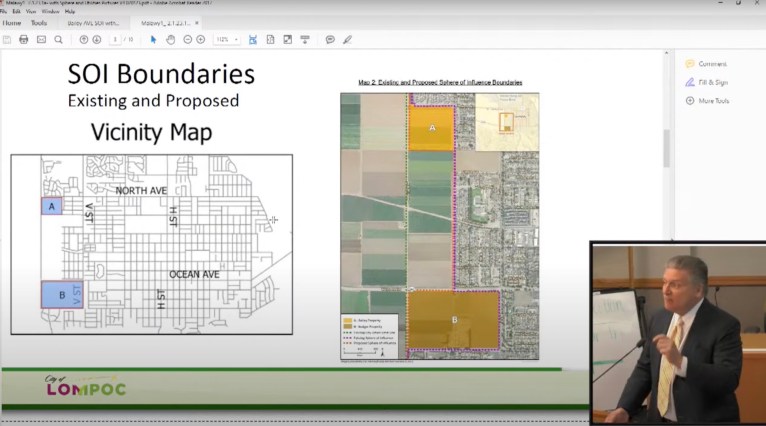
Stating several times that this was his first time speaking to a LAFCO, which he was “honored” to do, Hertzberg made the argument that the commissioners should look beyond environmentalism to whether Lompoc residents could afford to buy a home instead of renting Section 8 housing, invoking the American Dream during his lively monologue. The two schools these parcels were near were 60 and 80 percent Latino and poor, Hertzberg said.
“I’m not saying ‘approve,'” he advised. The city was “trying to do the right thing” and deserved a broad array of environmental and social policy considerations.
The rental squeeze of skyrocketing rents in a tight market would only get worse when 10,000 newcomers filter in, said City Attorney Jeff Malawy, explaining that Vandenberg Space Force Base was expanding. To that news, former Lompoc mayor Joyce Howerton stated wryly during public comment that she’d be a rich woman if she had a dollar for every time she’d heard Vandenberg was going to have huge growth.
The 148 acres are formed by two sets of parcels known as the Bailey Avenue property and the Bodger property on the eastern edge of town. Jack Bodger — whose family once ran Bodger Seed, a flower seed producer in the city known as the flower seed capital of the world — spoke of the limits he’d put on the parcel because it was close to Miguelito Elementary School. The prevailing wind blew toward the residences and school on two and half sides of his acreage, Bodger said, and he grew pinto beans because they didn’t require pesticides. He only farmed 40 percent of the land in order to shield residents from high-intensity farming.
“The financial impact is substantial,” Bodger said. “With property taxes, insurance, maintenance, water, we’re not even breaking even.”
But despite Hertzberg’s exhortations and the heartfelt testimony by residents, the majority of the LAFCO board wanted more information about avoiding building on farmland and how much infill areas were available in the city for additional housing.
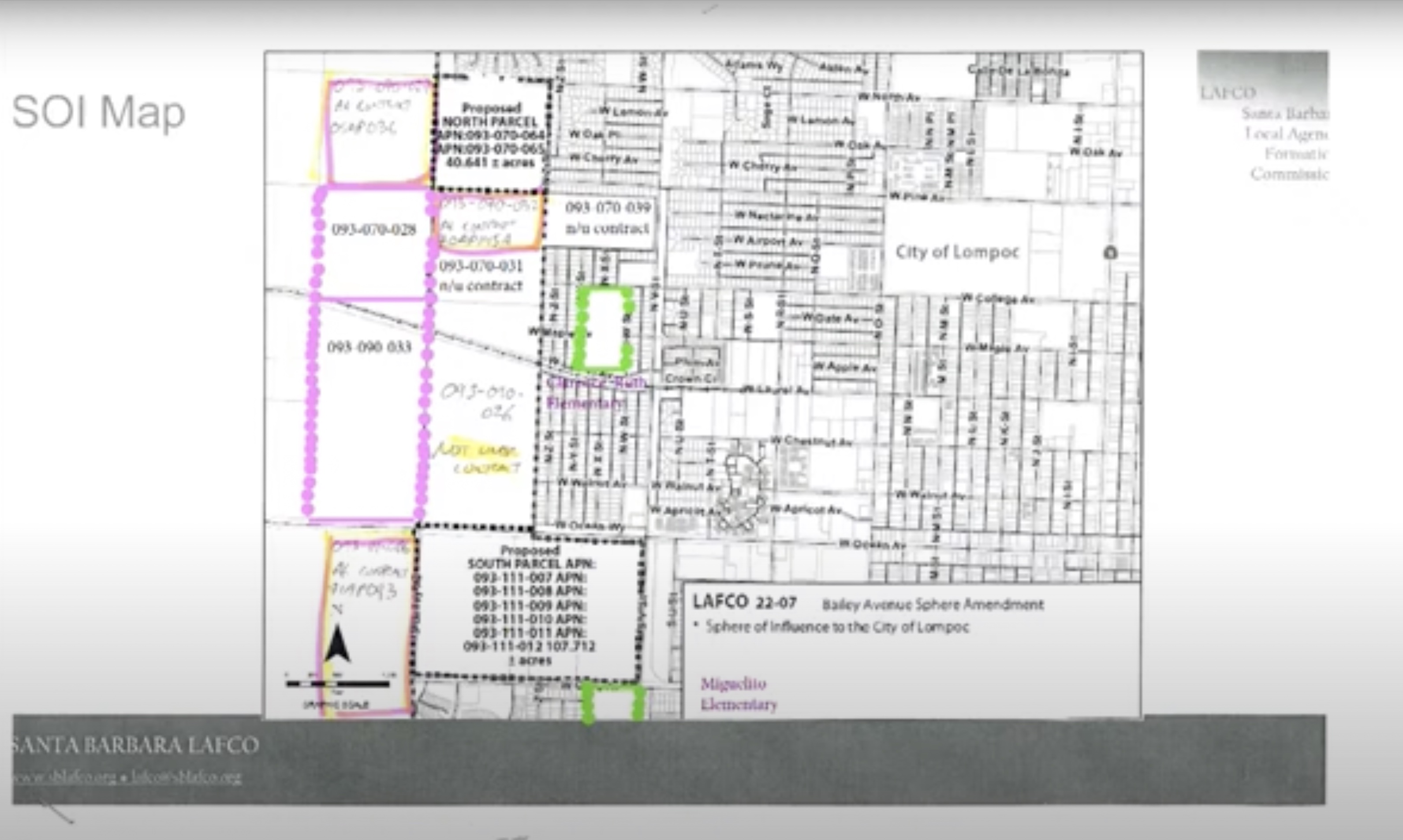
While Lompoc Councilmember Gina Cordova told the commissioners the city had no infill space left — “About 720 units remain to be built on the last three vacant parcels in Lompoc. There’s no more land in Lompoc for significant housing” — Mayor Osborne dropped the startling news that the county’s housing allocation number was wrong. The state recently told the Santa Barbara County Association of Governments that it had mistakenly left out 2,500 homes and would add them to the next eight-year cycle: “We’re already under-planning,” Osborne told her fellow commissioners.
Nevertheless, Commissioner Joan Hartmann cleared away any notion that Lompoc faced anything but an uphill battle. Just as Santa Barbara County is in the top one percent in the value of its agricultural products in the U.S., she said, so was Los Angeles in the 1950s when Hartmann was growing up there. “I watched as the orange groves and truck farms disappeared to low-density subdivisions,” the 3rd District supervisor recalled.
Claire Wineman, who runs the Grower-Shipper Association in North County and whose family owns land along Bailey Avenue, had written a letter to the commission to explain the exceptional quality of the soil. “The loam soils are Class 1 on the soils capability index,” read Hartmann, who is an environmental attorney and an avid gardener. And the micro-climate tends to be more moist, cooler, more overcast, and very fertile, requiring less irrigation, she said.
One of the offers Lompoc had made to LAFCO was to require the landowners to provide an equal amount of prime agricultural land under a conservation easement. Hartmann suggested that land of equally exceptional quality would be hard to come by.
Hartmann then showed a map of the two parcels, the gap between them — originally part of the specific plan area — and the acreage that bordered them. The bordering land was all Williamson Act lands, which meant the landowners had agreed to keep it in agriculture for a set amount of time in exchange for lower taxes. The county engages in the program, Hartman said, “foregoing the tax dollar because the county deems agriculture to be of such great significance here.”
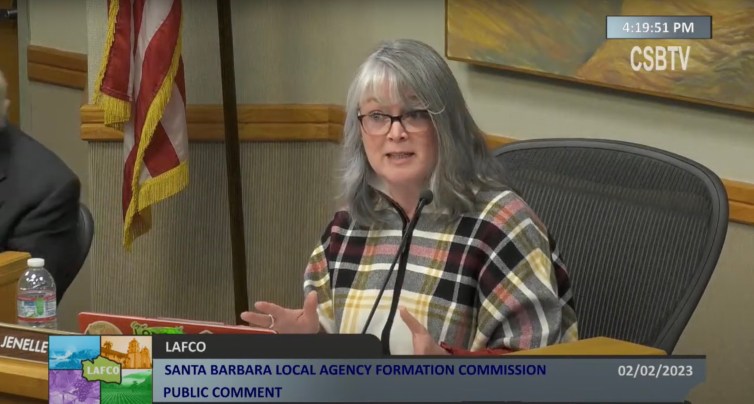
Not only would the value of all the nearby land shoot up once residences sprouted, “the noise, dust, fertilizer chemical smells, people at work early and late during harvest, the wind machines when the temperature drops — my office gets all these calls. And people do not appreciate these conflicts when they first purchase their home,” Hartmann said.
LAFCO and the county had strong policies to prevent urban sprawl, and Lompoc’s sphere-of-influence application conflicted with them, she said.
“We asked the city to show that no other housing options exist, and today the city has not met that burden,” said Hartmann, a touch of steel in her gentle voice.
In addition, she noted, school lands are cheaper next to ag, which is the same situation in Guadalupe, Buellton, and Santa Maria. “Should LAFCO encourage displacing all ag near schools?”
Hartmann said she was willing to work toward a compromise, but she didn’t believe the commission had the information it needed. “The information we do have says the consequences aren’t worth it,” she concluded.
The LAFCO commissioners voted 5-2 with Hartmann. Commissioner Jay Freeman of Isla Vista noted it was appropriately Groundhog Day, as staff would return in April with a list of the commissioners’ findings that Lompoc may attempt to fulfill once again.
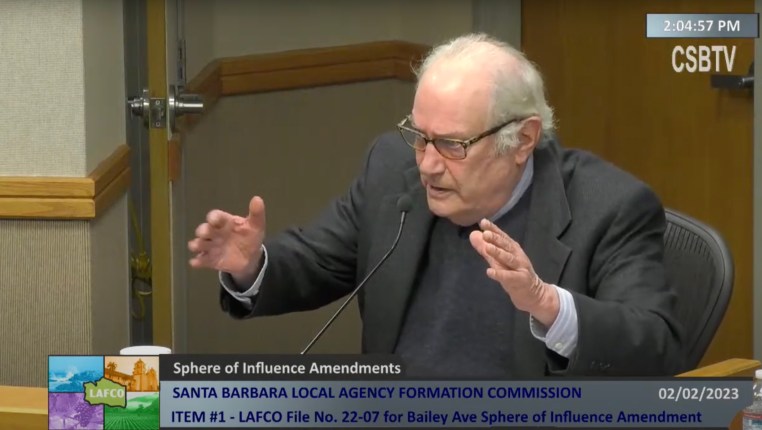
Clarification: The housing numbers cited here are from a specific plan that the City of Lompoc abandoned. Currently, the Bodger and Bailey properties are outside the city, but if they were zoned as in the 2030 General Plan, as many as 567 homes could be built.
Support the Santa Barbara Independent through a long-term or a single contribution.




You must be logged in to post a comment.